Teach kids about the vegetable group through fun cooking activities and children’s books! ‘Little Hands That Cook with Books’ makes learning about healthy eating hands-on and engaging.
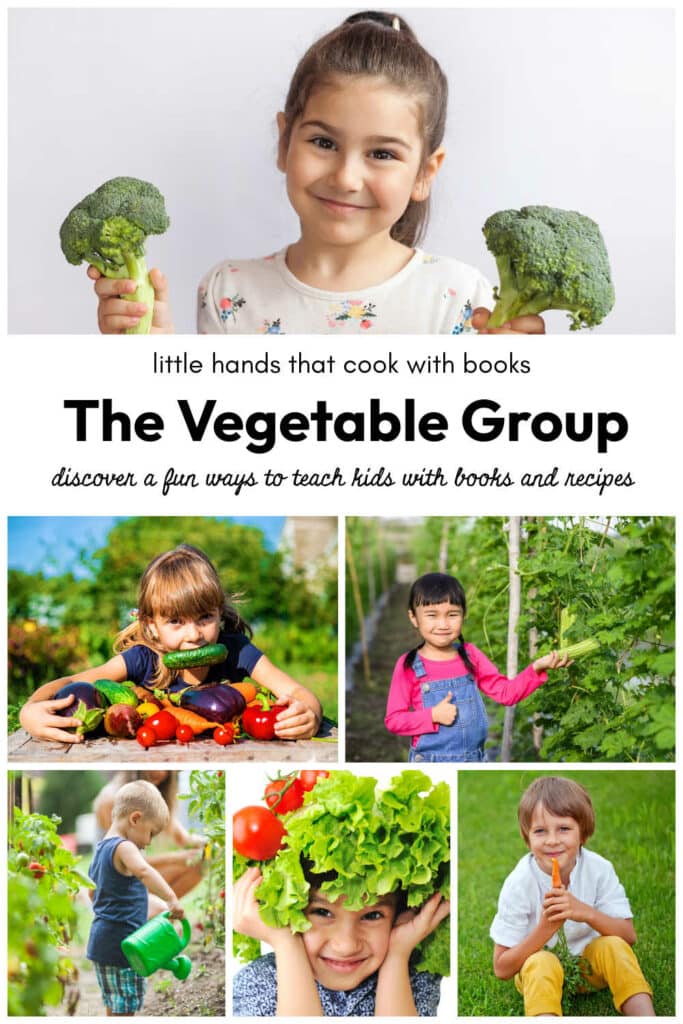
Let’s Eat the Vegetable Group
Discover a fun and educational way to teach kids about the vegetable food group through cooking and reading. Perfect for little hands eager to explore healthy eating!
We’re learning about Vegetables this week and how important they are for our bodies. Did you know that you should fill half your plate with vegetables every time you eat? What are your favorite vegetables? Do you know how they grow.? All questions you should be asking your children as they shop with you, cook with you and eat with you.
We Like Vegetables Song
(sing to the tune of “Are You Sleeping?”)
Do you like veggies? Do you like veggies?
Yes, we do ! Yes, we do !
Tomato and spinach
Potato and carrot.
Yum, yum, yum, yum
Yum, yum, yum, yum
After singing you can substitute different vegetables into the song ie. broccoli, cauliflower, peppers, cucumbers, radish, peas, corn, anything works.
Vegetable Activities for Kids
We started out our lesson asking these very same questions and by reading these books. Once we were done we made a list of all the vegetables we read about. We talked about our favorites and also new ones that we want to check out at the grocery store and farmer’s market.
We took out a variety of real and plastic vegetables from our Play Kitchen and sorted them with the word cards too. I’m always trying to encourage literacy in everything we do.
We even made a list of what we want to grow in our garden when it’s time to start planting. Here are our tips for the best vegetables to grow with kids.
Disclosure: This post contains Amazon Affiliate links. As an Amazon Associate I earn from qualifying purchases.
Vegetable Books for Kids
- Oliver’s Vegetables by Vivian French
- From Seed to Plant by Gail Gibbons
- Up, Down, Around by Katherine Ayers
- The Vegetables We Eat by Gail Gibbons
- Growing Vegetable Soup by Lois Ehlert
- Mrs. Peanuckle’s Vegetable Alphabet by Mrs. Peanuckle
- The Ugly Vegetables by Grace Lin
- The Curious Case of the Vanishing Veggies by Jack Gimm
- Too Many Carrots by Katy Hudson
We had fun making our very own vegetable soup and posted about it. Make sure to try it out with your children! Here’s the link… Little Hands that Cook: Alphabet Soup
We made a modified version of Veggie Pizza from Pillsbury for our Cooking Class Recipe
Vegetable Pizza Snack Recipe
INGREDIENTS
- 1 – Pillsbury® Big & Buttery Refrigerated Crescent Dinner Rolls 12 oz (8 ct)
- 1 (8-ounce) package fat-free cream cheese, softened
- 1 cup fat-free sour cream
- 1 package dry Ranch Dressing Mix
- Finely chopped fresh vegetables of choice: zucchini, mushrooms, green peppers, green onions, tomato
DIRECTIONS
- Preheat oven to 350 degrees F (175 degrees C).
- In a lightly greased 9×13-inch pan or 13-inch round pizza stone, arrange the crescent roll dough in a single layer. Pinch together the edges of the dough.
- Bake for 12 minutes, or until it becomes a golden brown crust.
- Remove the crust from the oven and allow it to cool.
- In a medium bowl, mix together the cream cheese, sour cream and dressing mix.
- Evenly spread the cream cheese mixture on the crust.
- Sprinkle veggies on top of the cream cheese spread.
- Refrigerate for 30 minutes to allow the spread to thicken.
- Cut the chilled pizza into wedges or squares with a pizza cutter to serve.
Directions for Kids
1. Spread the dough onto the greased pan (Let the grown-ups bake the crust)
2. Mix the cream cheese, sour cream, and ranch dressing
3. Cut vegetables up using a butter knife (remember safety first)
4. Then spread the ranch mixture onto the cooked crust
5. Sprinkle on the vegetables
Do you eat 5 a Day?
Vegetable and Fruit Food Tracker for 5 a Day
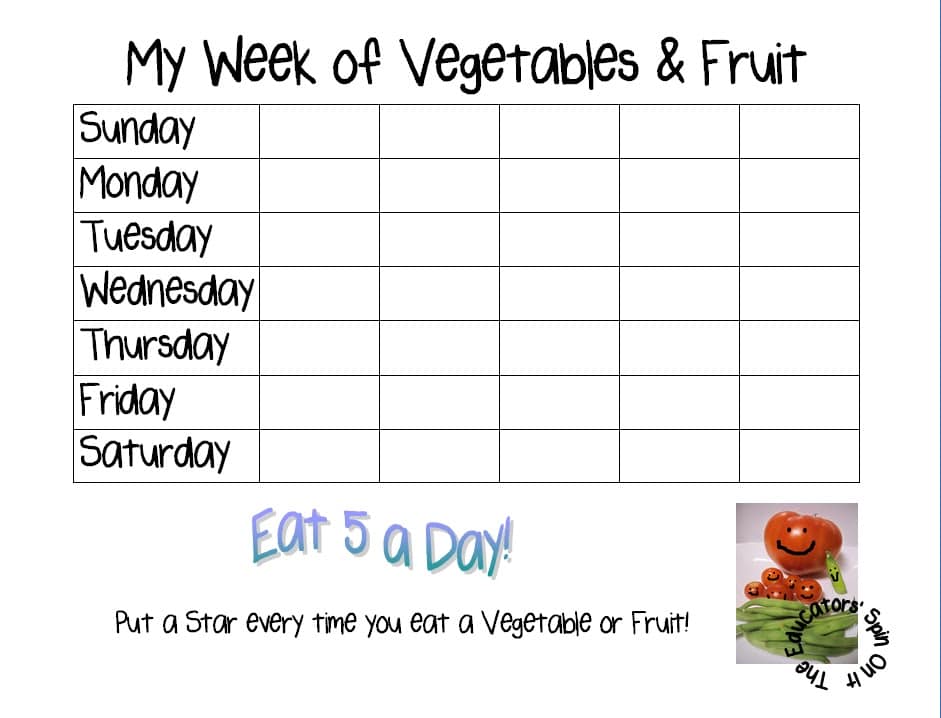
We’ve been tracking our fruits and vegetables on our fridge this week. It’s really a challenge to get 5 Portions a day into my little ones unless I really plan it out. Below I listed how much a portion really is. I’m the first to admit I didn’t know any of these and researched them online. I thought maybe I might not be the only one, so I saved you the time in looking it up. This list came from http://www.healthy-eating-made-easy.com/
Vegetable Coloring Page
Vegetable and Fruit Matching Game from Crayola
Set up a Vegetable Stand for Playtime
Provide the children plastic fruits, a cash register, play money and bags. Create name cards “seller”, “buyer” and “cashier“ for children to wear around their neck. Encourage the children for buy, sell and pack the vegetables. The children can take turns being a buyer, seller or cashier.
Use the vegetable labels that you used during the lesson for your child to incorporate literacy.
For more Food Resources
http://www.enchantedlearning.com/themes/food.shtml
http://preschoolalphabet.blogspot.com/search/label/Vegetables
Food Portions for Children
Last week I posted about the Fruit Group and My Plate with Little Hands that Cook. We also learned about how “My Plate” should look with each food group. Here’s another site.
WebMD is a great site for health resources. Here’s what WebMd had to say about portions with children and how they vary from Ages.
Are you trying to get more Vegetables into your Little ones and let’s face it the whole family? Here are some great books I’ve used over the year to help you out.
The Sneaky Chef by Missy Chase Lapine
Deceptively Delicious by Jessica Seinfield
Healthy Eating Made Easy recommends the following…
What Does Five a Day Look Like?
For pre-schoolers and younger children, be guided by your child’s appetite. You’ll be doing well if they have four or five servings a day. A typical portion for a young child might be:
- 1 small whole fruit, like a plum
- ½ a larger fruit, like an apple or orange, chopped or sliced if necessary
- 2 tbsp (1/2 cup) strawberries or other berries
- 8 grapes or cherries (remove stones)
- 1-2 heaped (1/2 cup) tbsp cooked vegetables
- small handful carrots or other vegetable sticks.
Serving Sizes for Kids Ages 2-6
http://www.healthy-eating-made-easy.com/fruit-and-vegetable-servings.html
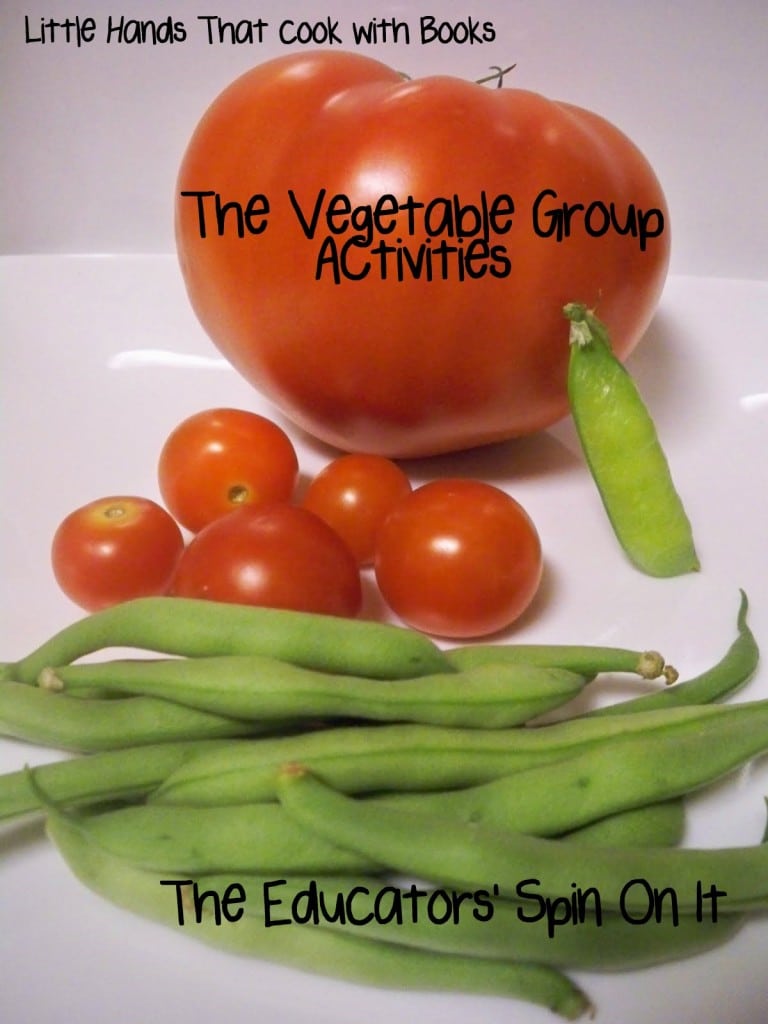
Vegetable Servings Sizes for Kids
- Asparagus, canned 7 spears
- Asparagus, fresh 5 spears
- Avocado Half
- Aubergine One-third of a large one
- Baby sweetcorn 6
- Baked beans 3 tbsp (1/2 cup)
- Broad beans 3 heaped tbsp (1/2 cup)
- Broccoli 2 large florets
- Brussels sprouts 8
- Cabbage 3 heaped tbsp shredded, (1/2 cup)
- Carrots 1 large
- Celery 3 sticks
- Cherry tomatoes 7
- Chickpeas See Pulses
- Courgette Half a large one
- Curly kale 4 tbsp (1/2 cup)
- Eggplant One-third of a large one
- French beans 4 heaped tbsp (1/2 cup)
- Kidney beans See Pulses
- Lentils See pulses
- Mixed salad Cereal bowl full (1 cup)
- Mushrooms, button 14
- Onion 1 medium
- Parsnip 1 large
- Peas, fresh, frozen or canned 3 heaped tbsp (1/2 cup)
- Potatoes Never count towards your daily vegetable servings, in any form
- Pulses, cooked: kidney beans, chickpeas, lentils etc 3 heaped tbsp (1/2 cup)
- Salad leaves, lettuce etc Cereal bowl full (1 cup)
- Scallions 8
- Snowpeas Handful
- Spinach, cooked 2 heaped tbsp (1/2 cup)
- Spring onions 8
- Sugarsnap peas Handful
- Sweetcorn, fresh, frozen or canned 3 heaped tbsp (1/2 cup)
- Tomato 1 medium
- Vegetable soup 1 serving of fresh or canned soup
- Vegetable sticks Handful of mixed – celery, pepper, carrot etc
- Zucchini Half a large one
Hope your little ones enjoy learning about Vegetables! One of the best ways to teach your children about vegetables is by creating your own garden. Here are some helpful tips about creating a Learning Garden with your Kids.
Explore our Balanced Eating Fun Series with Little Hands that Cook with Books!

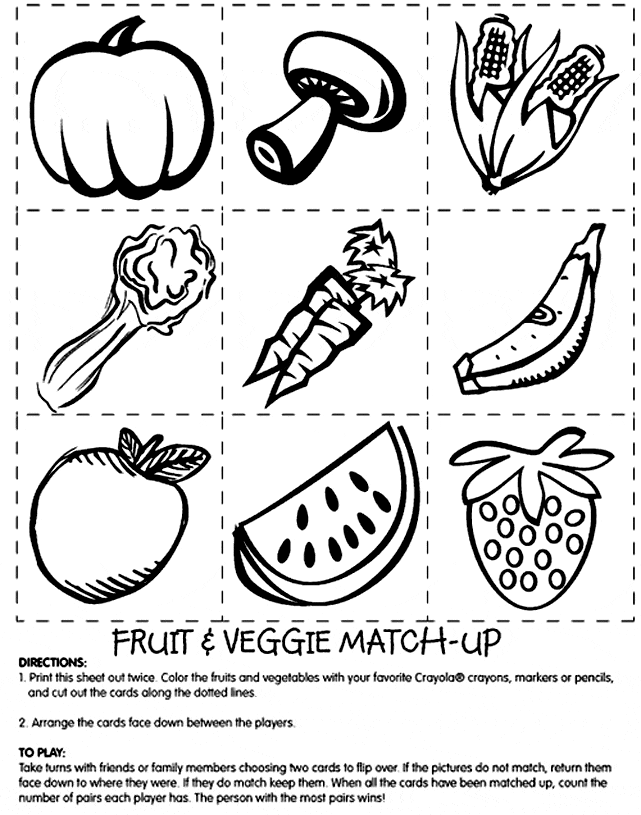
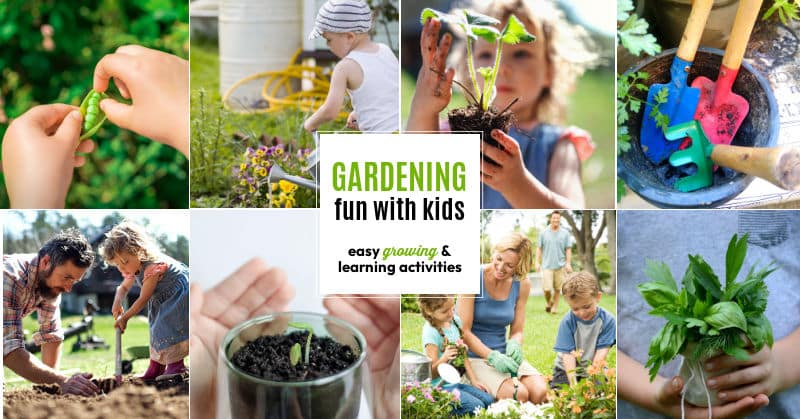
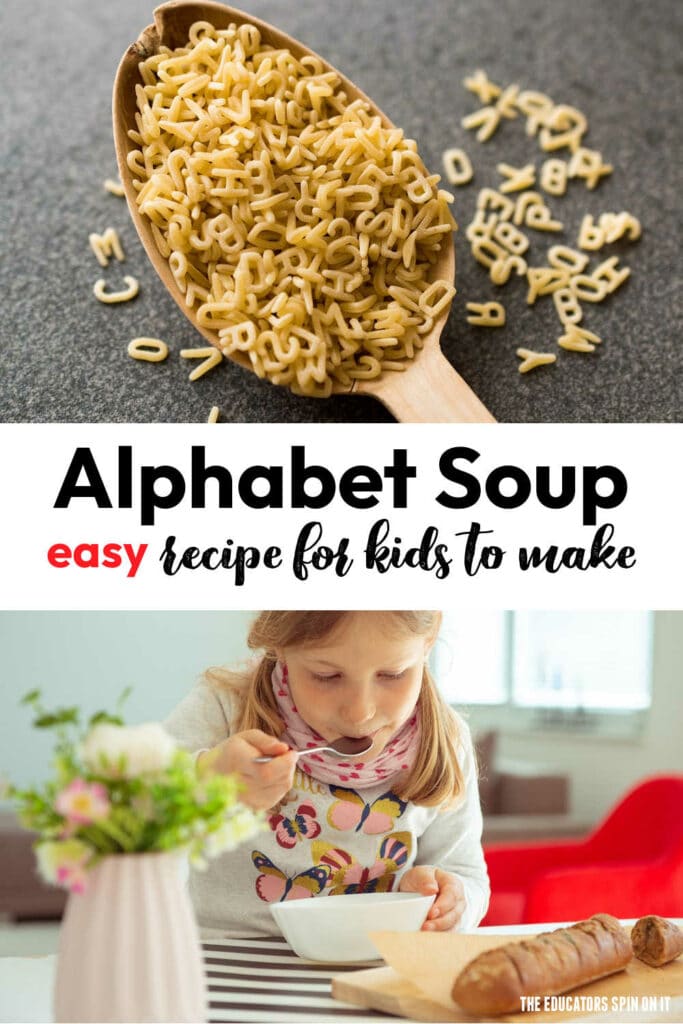
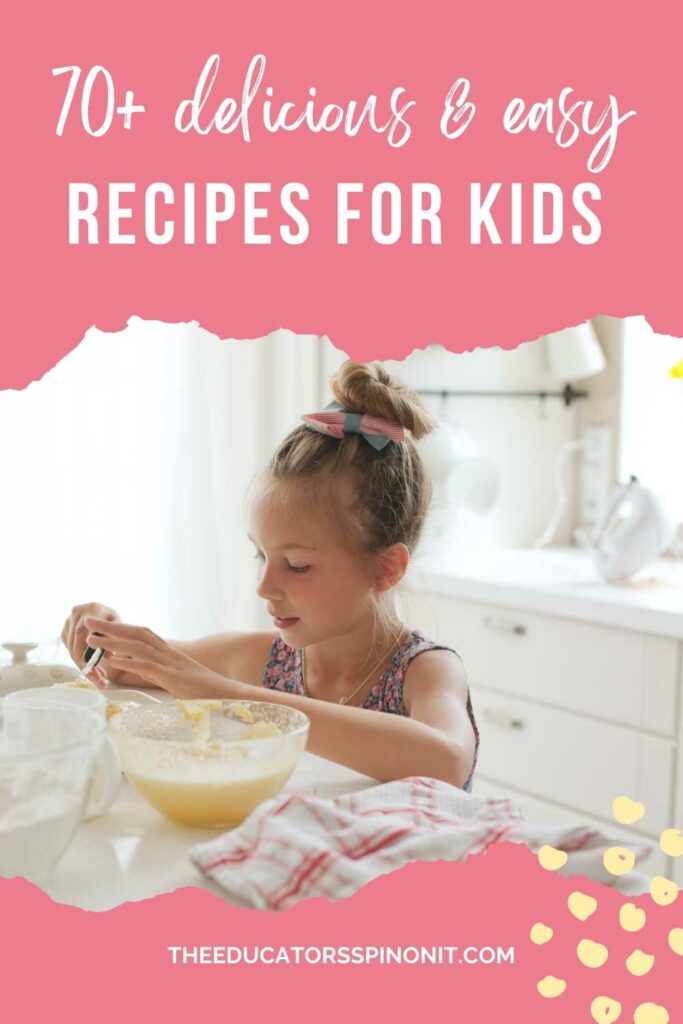
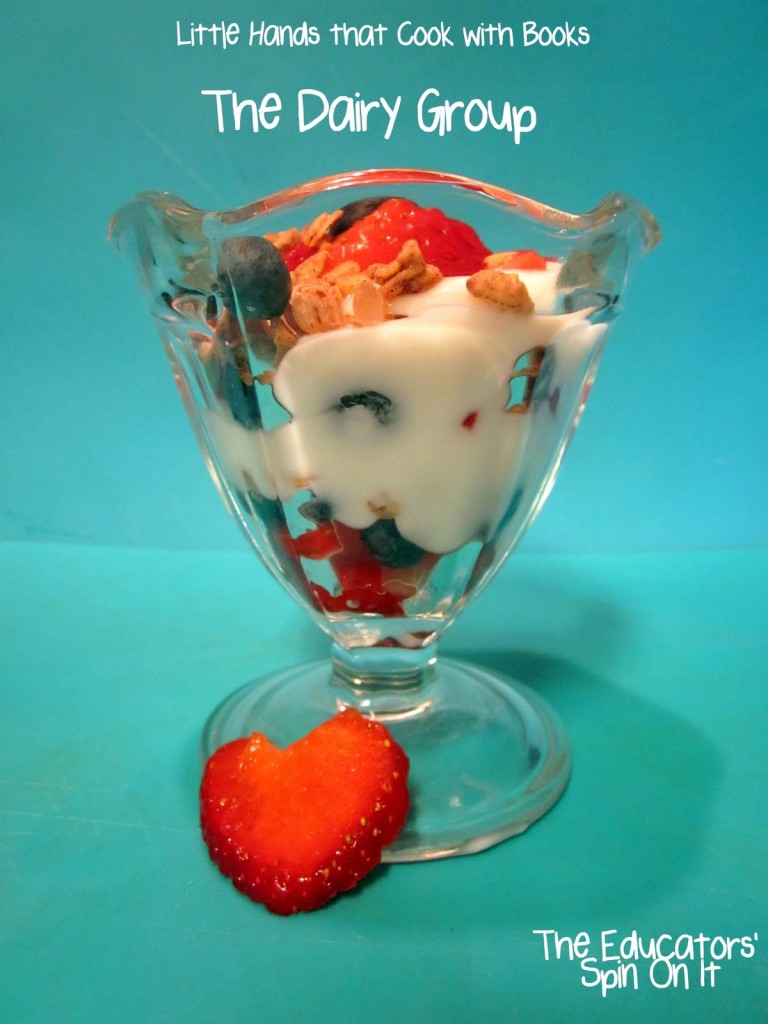






What a wonderful post with great ideas! Thanks!
I have to print out your post for a reference, there is great information there. I am on a mission to add more veggies to our plate here too.